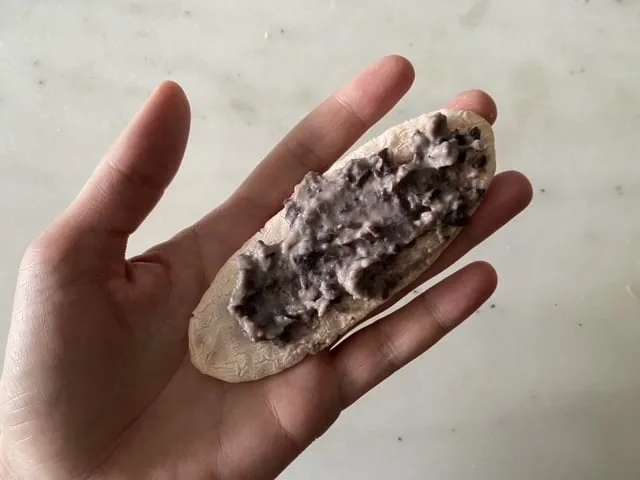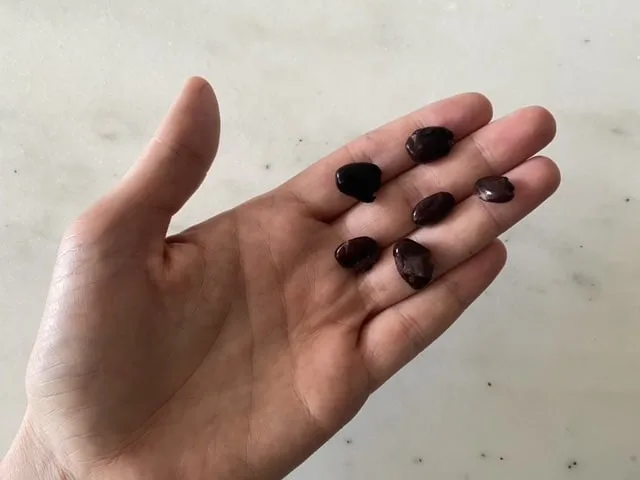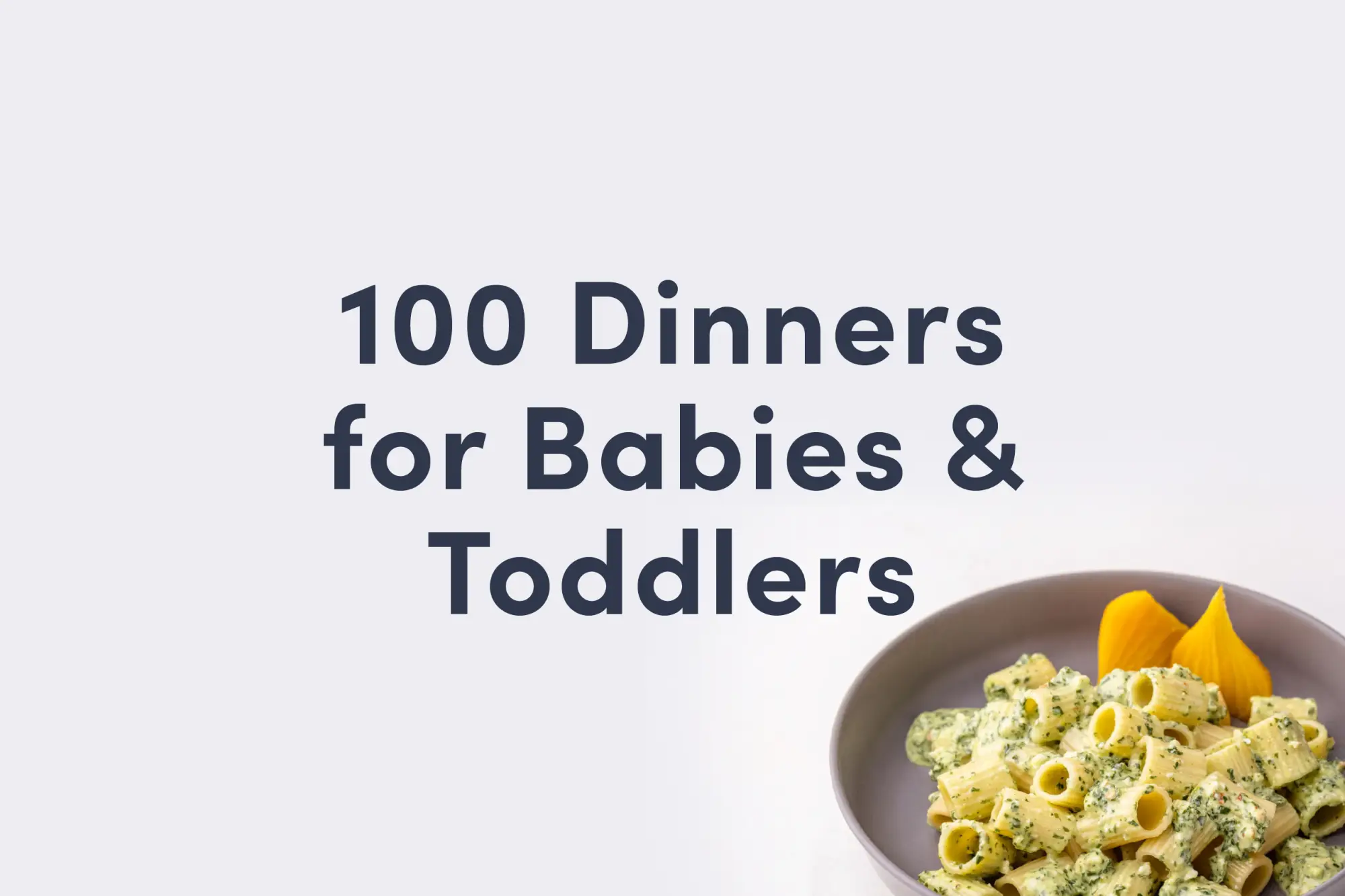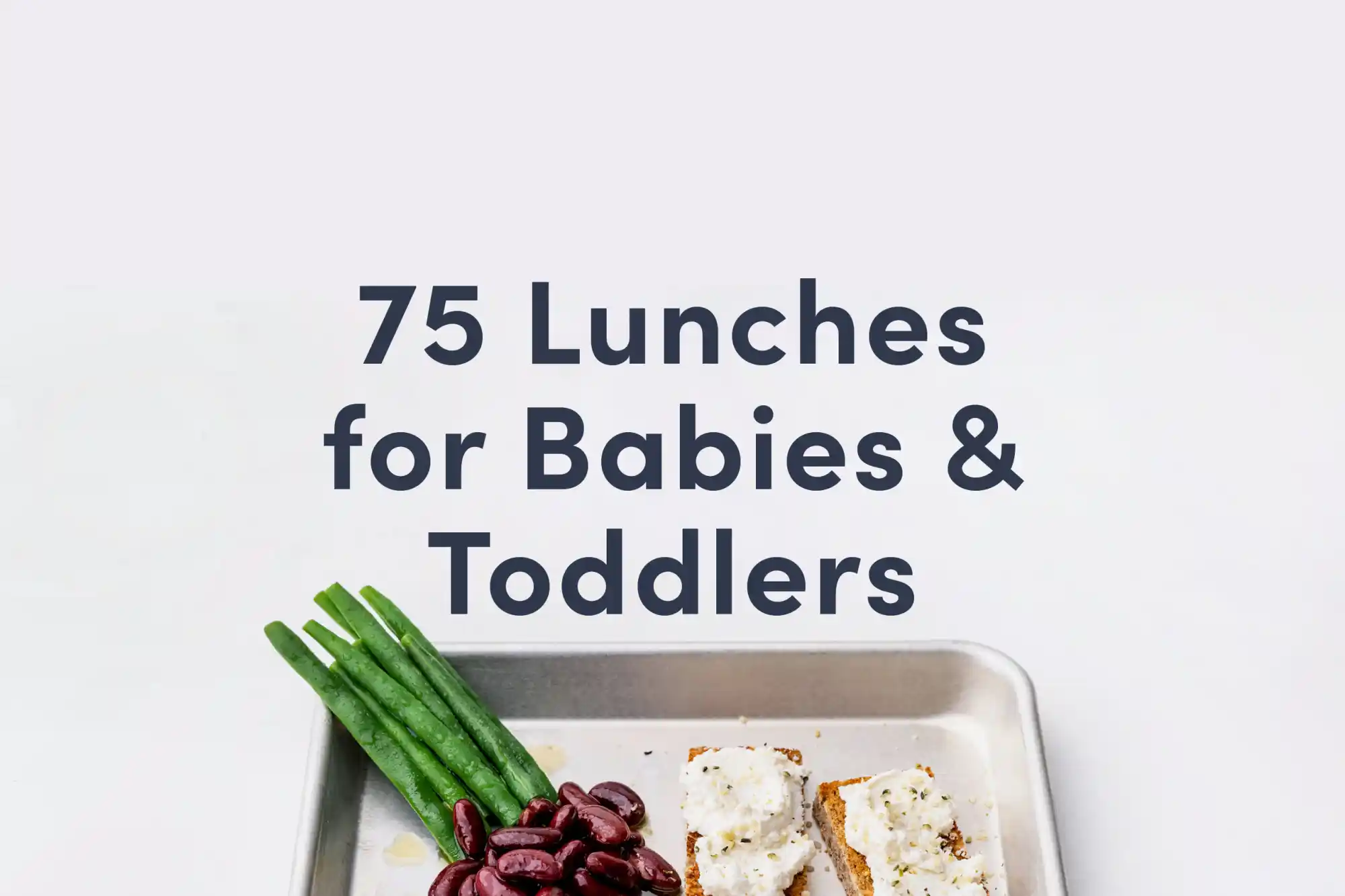Black Beans
Legume
Age Suggestion
6 months
Iron-Rich
Yes
Common Allergen
No

When can babies have black beans?
Black beans may be introduced as soon as baby is ready to start solids, which is generally around 6 months of age.
Black bean (or black turtle bean) originated in the Americas as part of the common bean family, which encompasses kidney bean, navy bean, and more. Black beans evolved from wild plants in the warm, fertile tropics of Central America, where humans first learned to cultivate the legume. From there, dried beans traveled northward with migration and trade with Indigenous peoples living on the Caribbean islands and along the eastern seaboard of North America.
Are black beans healthy for babies?
Yes. To start, black beans are an excellent source of fiber, carbohydrates, and protein, as well as plant-based omega 3 fatty acids. They contain B-vitamins, specifically vitamin B1 and folate, which help our bodies process carbohydrates, fats, and proteins and power our brain and nervous system. The best part about black beans: they contain iron and zinc, two essential nutrients for babies. Babies need increasing amounts of iron starting at the 6-month mark, when their reserves become depleted, and black beans offer a great source of dietary iron at this stage of a baby’s life. Plus, the bean’s black shell offers anthocyanins, plant-based compounds with antioxidants that fight free radicals in the body.
★Tip: Vitamin C helps baby absorb iron from plant sources, so serve black beans with veggies that are high in vitamin C, such as asparagus, bell pepper, broccoli, cauliflower, or peas.
Are black beans a common allergen?
No. Black beans are not a common food allergen. Bean allergies have been reported in some patients with allergies to other legumes, including peanut and soybean (which are common food allergens). However, being allergic to one type of legume does not necessarily mean that an individual will be allergic to others, although the risk of having more than one legume allergy can increase. Fortunately, most individuals with peanut or soy allergy are able to tolerate other legumes just fine.
Individuals with allergies to birch tree pollen and/or Oral Allergy Syndrome (also called pollen-food allergy syndrome) may be sensitive to legumes, such as black beans. Oral Allergy Syndrome typically results in short-lived itching, tingling, or burning in the mouth and is unlikely to result in a dangerous reaction.
As you would when introducing any new food, start by offering a small quantity for the first few servings. If there is no adverse reaction, gradually increase the quantity over future meals.
Are black beans a choking hazard for babies?
Yes. Black beans are small, rounded, and can be firm, especially when raw or undercooked, qualities that can increase the risk of choking. To reduce the risk, prepare and serve black beans in an age-appropriate way as described in the How to Serve section. As always, make sure you create a safe eating environment and stay within an arm’s reach of baby during meals.
Learn the signs of choking and gagging and more about choking first aid in our free guides, Infant Rescue and Toddler Rescue.
Videos
Can babies have canned black beans?
Yes, babies can have canned black beans or fully cooked dried beans.
Are the lectins in black beans safe for babies?
Yes. Often called anti-nutrients, these naturally-occurring plant compounds (including lectins, oxalates, and phytates) break down during the soaking and cooking process and are generally harmless in most individuals when consumed as part of a balanced diet. Lectins and oxalates can even offer health benefits, such as antioxidant and anti-cancer properties.
Do black beans need to be soaked before cooking?
No, but soaking them in water prior to cooking can reduce cooking time, reduce the levels of lectin and of a gas-producing carbohydrate, raffinose, and help make the bean and its key nutrients more easily digestible.
Here are a couple of soaking methods:
Overnight soak: Use a ratio of 1 lb (454 g) of dried beans and 10 c (2 ½ liter) water, and soak the beans in water for 4 or more hours or overnight. Drain and rinse the beans prior to cooking.
Hot soak method: Use a ratio of 1 lb (454 g) of dried beans and 10 c (2 ½ liter) water, and bring the mixture to a boil for 2-3 minutes. Turn off the heat, then soak for a few hours. Drain and rinse the beans prior to cooking.
★Tip: Cooking dried black beans from scratch and finding they won’t soften? It’s possible they’re past their prime. While black beans are shelf stable for around one year, black beans that are more recently packed will cook better and easier than ones with an older pack date.
How do you serve black beans to babies?
Every baby develops on their own timeline, and the suggestions on how to cut or prepare particular foods are generalizations for a broad audience.
6 months old +:
Crush or blend cooked black beans into a textured mash or smooth paste for baby to scoop with their hands. If you prefer, serve the mash or paste with a spoon or thinly spread it on thin rice cakes or corn tortilla. Feel free to stir in breast milk, formula, olive oil, or even yogurt when making the mash or paste. You can also stir the crushed or pureed black beans into soft, scoopable foods like corn grits, mashed vegetables, rice porridge, or stewed greens. Just start with small portions of black beans at first, to minimize any digestive discomfort from the high-fiber food.
9 months old +:
Babies with a developing pincer grasp (where the thumb meets the pointer finger) may graduate to black beans that have been gently flattened between your thumb and finger before serving. Alternatively, continue serving mashed or pureed black beans for baby to scoop with hands, dip in fingers or pieces of cooked vegetables, or practice eating with a spoon.
12 months old +:
By this age, toddlers should be able to handle whole cooked black beans so try offering the beans on their own or as part of a shared meal. You can, of course, continue to mash and pre-load on spoons. To encourage self-feeding with utensils, scoop up some beans and lay the utensil next to the food for the child to try to pick up.


Blending canned black beans to make a paste for young babies
How to serve black beans for babies 6 months+
Bring baby to the table with meal ideas from our guide, 100 Dinners for Babies & Toddlers.
Written by
Expert Tips Delivered to Your Inbox
Sign up for weekly tips, recipes and more!
The content offered on SolidStarts.com is for informational purposes only. Solidstarts is not engaged in rendering professional advice, whether medical or otherwise, to individual users or their children or families. No content on this site, regardless of date, should ever be used as a substitute for direct medical advice from your doctor or your medical or health professional, nutritionist, or expert in pediatric feeding and eating. By accessing the content on SolidStarts.com, you acknowledge and agree that you are accepting the responsibility for your child’s health and well-being. In return for providing you with an array of content “baby-led weaning” information, you waive any claims that you or your child may have as a result of utilizing the content on SolidStarts.com.








